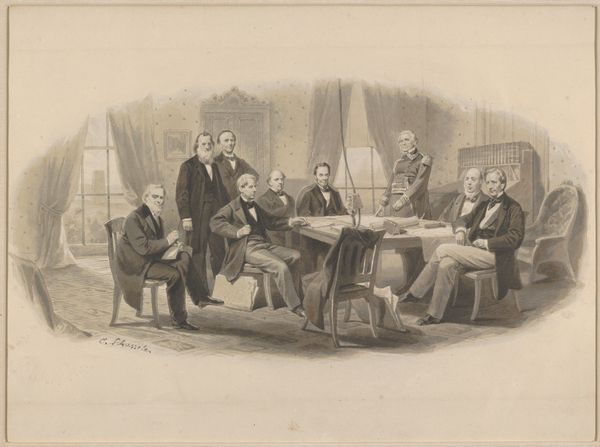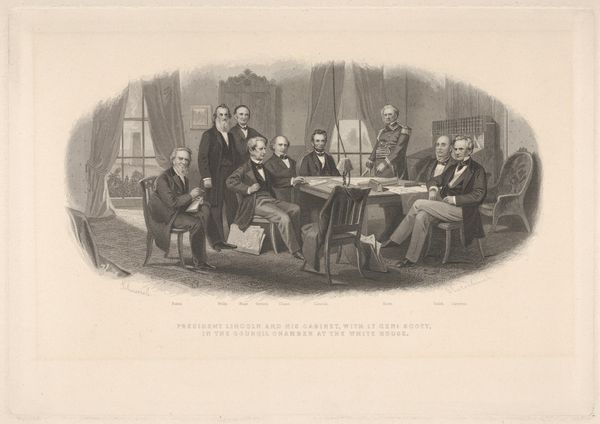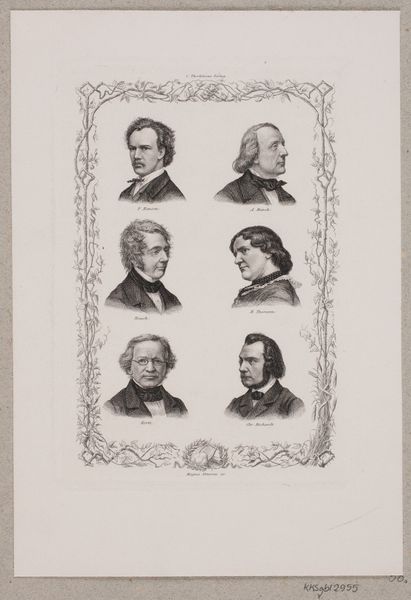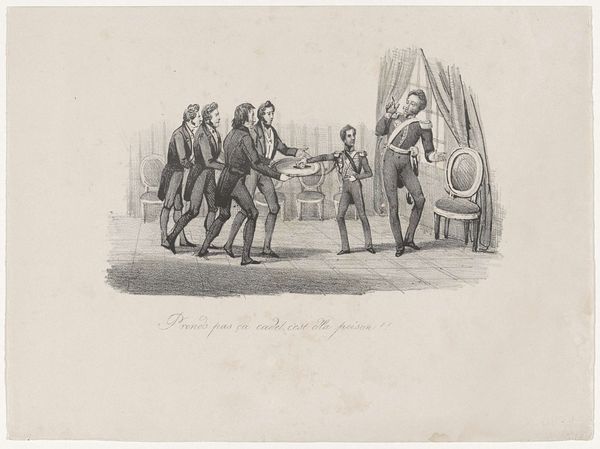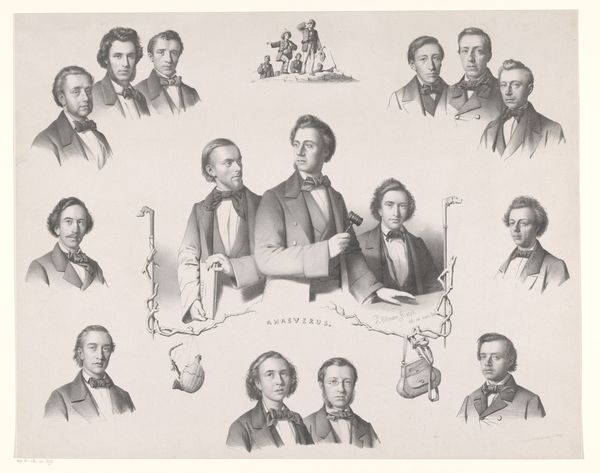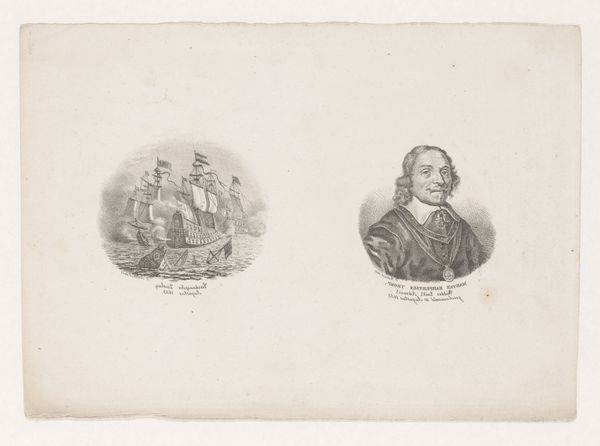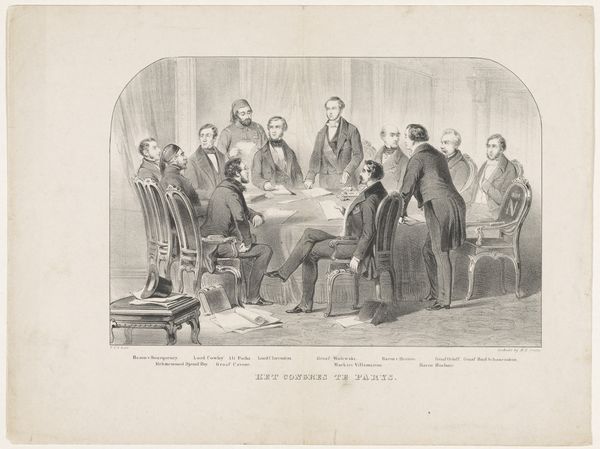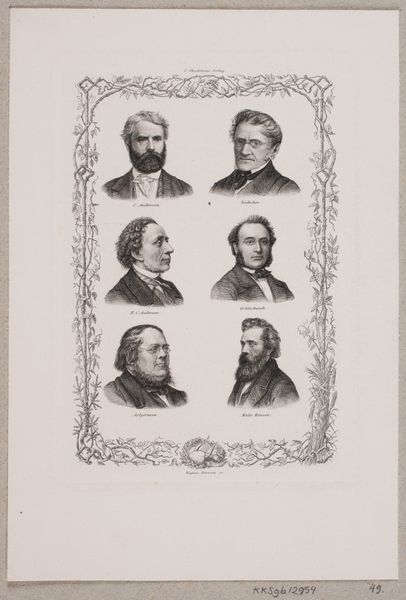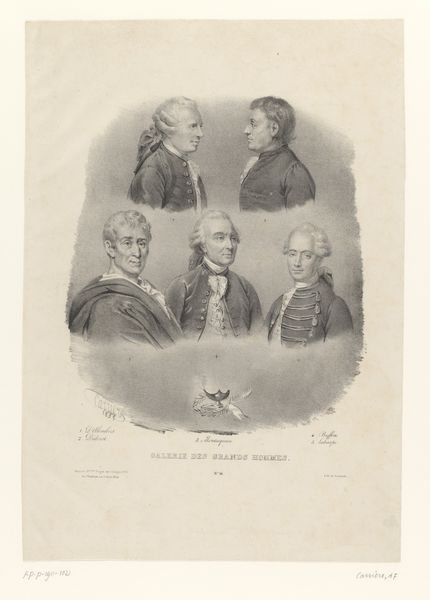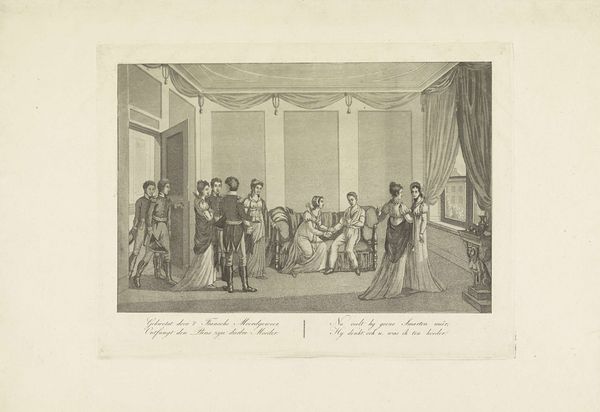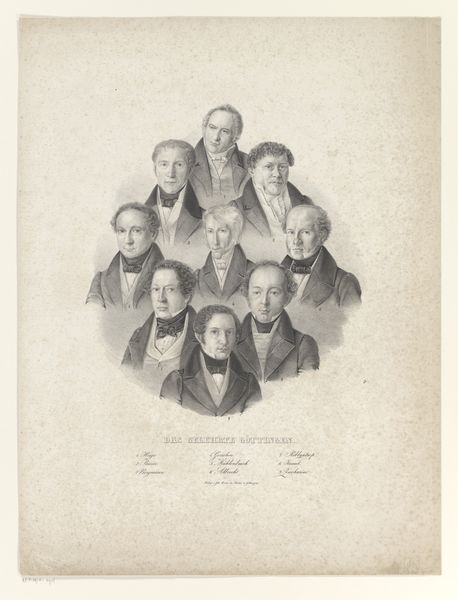
#
portrait
# print
#
figuration
#
group-portraits
#
academic-art
Dimensions: height 427 mm, width 655 mm
Copyright: Rijks Museum: Open Domain
Editor: This is a print from before 1862, a portrait by Axel Jakob Salmson, titled "Portret van Professor Cottrely en zijn vier broers"—or, "Portrait of Professor Cottrely and his four brothers." I am struck by the rather formal presentation and subtle power dynamics at play, even in the posture of each of the subjects. How do you read this image? Curator: The portrait indeed carries a heavy symbolic weight. Notice the arrangement; Professor Cottrely is centrally placed, enthroned almost, which immediately establishes hierarchy. The brothers flank him like attendants or extensions of his being. This echoes traditional donor portraits, where family lineage and social standing are visually asserted. Editor: Donor portraits? Could you elaborate on that? Curator: They're portraits which embed the subjects within a broader societal and cultural narrative. Think of royal families or prominent religious figures surrounded by their kin. In this case, Cottrely’s intellectual and social authority is being reinforced, even through his brother’s subordination. The subtle differences in attire might also suggest their roles within the family structure or societal expectations, reinforcing those unspoken traditions and hierarchies. Editor: So, their clothes speak to societal roles as well? Curator: Precisely. Visual symbolism is multifaceted, reflecting historical memory and perceived social standing. Their fashion could communicate status, ambition, or adherence to specific cultural ideals. Group portraits were commissioned to solidify lineage and memory, so Salmson’s attention to each detail underscores the psychological and cultural stakes present when recording familial relations in art. What do you think the artist wanted to achieve? Editor: It's fascinating to consider how an image works not just as representation, but also as a cultural artifact actively constructing meaning. I initially saw the image as a straightforward portrait but thinking about the symbolic communication enriches the work so much. Curator: Exactly. Understanding those historical and psychological layers reveals the artwork as a carefully crafted statement within its specific cultural milieu.
Comments
No comments
Be the first to comment and join the conversation on the ultimate creative platform.
